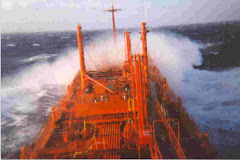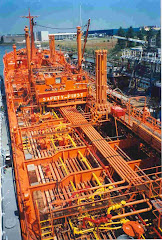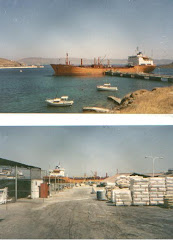The latest shipping news is that these former rivals have had to team up on several key liner services in order to compete with Maersk Line on the key Asia-Europe route. As a privately held company, MSC’s financial information is not easily available, but they are just behind Maersk in TEU capacity. CMA is in third place. The partnership is operational for a two-year period. There has not been any discussion of corporate merger.
The direct goal of the MSC, CMA commercial partnership is to offer a liner product comparable to the “Daily Maersk” service.
They are doing this on five Asia-to-Europe services, deploying 53 ships of 9,500 TEU to 14,000 TEU capacity. Four are cover routes to northern Europe (the Swan, Silk, Lion and Condor services) using ships of 11,400 TEU to 14,000 TEU. The fifth is the Asia-to-Mediterranean Jade service using nine ships of 9,500 TEU. Together, the two lines will control one-third of capacity of the over 10,000 TEU fleet (operating and on order), compared to Maersk’s 20%.
This move reflects the lack of volumes in the market as a consequence of the economic crisis and the difficulties of managing the vessels on these liner services. It is likely to make it very difficult to compete on these routes using vessels smaller than 10.000 TEU. Both partners need to bolster their balance sheets and have been selling ships and chartering them back at a time of loss-making Asia-Europe rates. The collaboration will allow both to cut costs and fill ships at the expense of other lines.
It is also likely that this synergy will attempt to tighten the screws on beleaguered vessel provider companies. MSC and CMA are reputed to be among the toughest negotiators in the charter market. There is concern that they might seek to renegotiate charters in the face of falling freight rates, potentially causing overstretched companies like Danaos serious problems. Shippers, on the other hand, are expressing concerns that the two mega lines may attempt to restrict capacity to maintain higher rate levels, making the Asia-Europe route an oligopoly.
There is a window of opportunity in this partnership for the next 12 months as Maersk has no large ships for delivery, while MSC and CMA CGM will receive 21 new buildings of over 13,000 TEU by the end of 2012. This will cause Maersk to lose market share until it starts to take delivery of their 10 Triple-E 18,000 TEU vessels. The Swiss-Italian carrier MSC would keep its fleet employed while allowing CMA CGM to achieve its growth plans, which have been derailed by the crisis and financial problems.
Maersk Line pioneered the advent of larger vessels with its E-class vessels (+15,000 TEU) back in 2006-7 and last year it embarked upon the new Triple E series.
It is clear that the liner industry suffers from serious earning margins problems, and another downturn in expected cargo volume will come with the growing recession in the E.U. Maersk, MSC and CMA are trying to face this challenge with larger vessels for lower unit costs as well as commercial strategies that give them some pricing power over rates, such as this potentially oligopoly of two mega carriers on the Asia-Europe route, squeezing out smaller liner companies.








